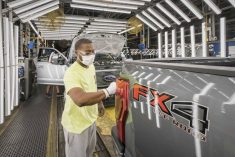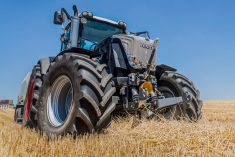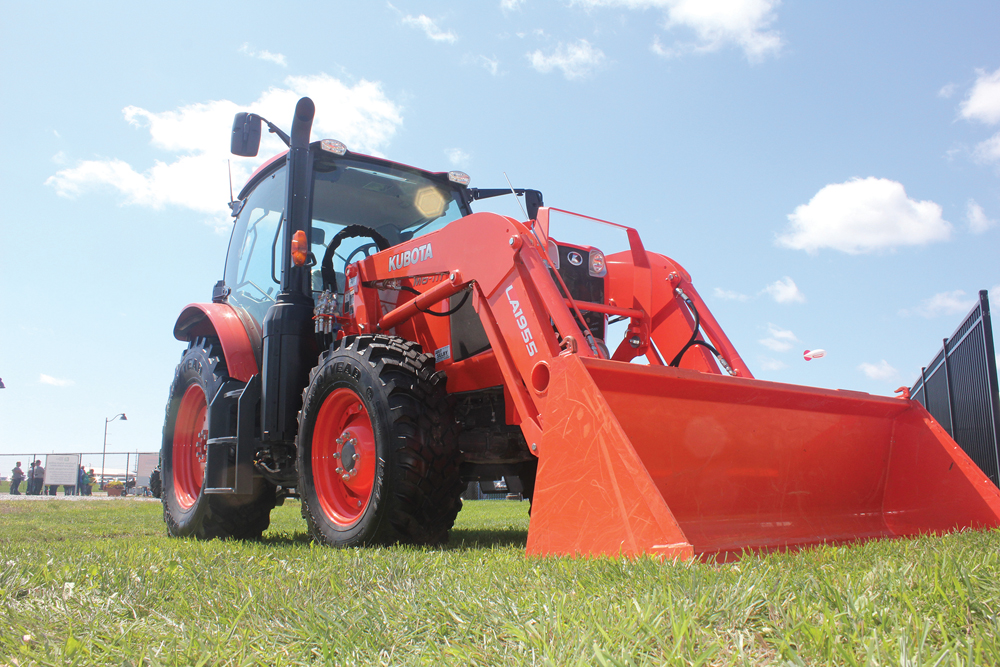Older tractors, self-propelled machines and farm trucks tend to get a little hard to control with age. Driving some of them down the road at maximum speed can be a bit like herding goats, and a little dangerous. They will only go approximately where you want them to.
The reason is often due to excessive wear on steering linkage components like tie rod ends. The good news is those parts are relatively inexpensive and easy to replace. There’s no need to hire a mechanic for this job. Getting tie rod ends to separate from joints even after the nuts and cotter pins are removed, though, can be a bit of a frustrating experience if you’re not familiar with how to do it.
Read Also

Claas brings 1000 Series SP forage harvesters to Canada
In mid-August, Claas unveiled its new line of Jaguar forage harvesters at an event in Visalia, California, deep in the heart of that state’s dairy region.
Once the nut is loosened, it is possible to just pound on the end of the threaded portion of the tie rod end to force it out. But if it is being removed to replace some other part and has to be re-used, pounding on it that way could damage the threads.
For those who just love to add specialty tools to their workshop inventory, it is possible to buy a dedicated tie rod end separator, which will push it out of the joint working a bit like a gear puller. But the best way to separate a tie rod end from its long-time home is with a pair of hammers. Virtually every workshop should have an ample supply of them on hand.
The reason a tie rod end won’t simply fall out after the nut is removed (if one does, there are more parts to replace), is because they have a tapered shape below the threaded portion that allows them to fit tightly in place and stay that way.

With a pair of hammers — one in each hand — strike the joint on opposite sides at the same time. This will create a shock wave that jolts the tie rod end out. Usually, an easy but firm strike, or couple of them, is all that’s required. But like every mechanical connection, sometimes they can be a bit stubborn and need a good solid blow. Leave the nut on loosely to prevent the tie rod from falling to the floor after it releases.
The next step to replacing an end is to loosen the clamp holding it in the tie rod tube, then thread it out. But before removing the end, make a note of its position. Count the number of exposed threads. It’s then easy to get the new end in the same position by leaving the same number of threads exposed. Measuring the overall length of the old tie rod from end to end will also provide a useful reference. These techniques will ensure the overall length of the repaired tie rod is exactly the same when the new ends are installed — or at least get it in the ballpark.
Wheel alignment
By being careful to install the new tie rod ends this way, the wheel alignment will be good enough to drive the vehicle to a local tire shop for an alignment check and fine tune the adjustment.
When working on a machine or vehicle that isn’t going to see many — or any — road miles and won’t get a professional adjustment, it’s easy to perform a quick check of the wheel alignment. Just measure from the centre of one tire to the centre of the other at the front. Then repeat the process again at the back of the tires. If the tires are exactly parallel, the measurements will be the same.
However, service recommendations for some vehicles and machines in use on a farm may recommend a slight toe-in (or positive toe) position, which improves straight-line driving characteristics. (That means having the wheels aimed slightly inward at the front.) For machines like older tractors or others that operate at low speeds, aiming for a zero toe in (perfectly parallel) alignment may be the best bet, especially if you don’t have access to service recommendations.

If the measurement shows the wheel alignment needs adjustment after new parts are installed, the direction of threads on the tie rod ends easily allow for that. Just loosen the clamps holding tie rod ends and rotate the tie rod tube, which will thread both ends in or out simultaneously to extend or shorten the overall tie rod length.
















